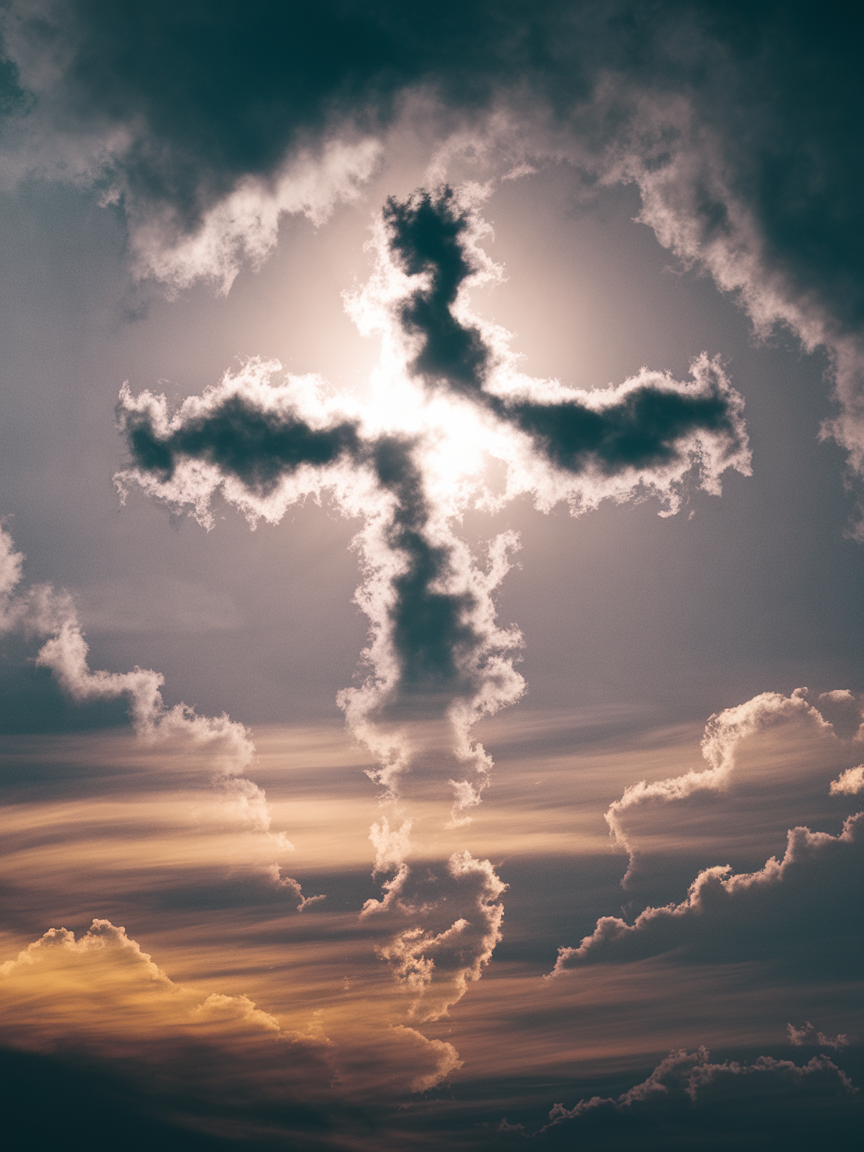Christ’s Second Coming in the Sky Over the Sahara Desert

The Second Coming of Christ in the Sky Over the Sahara Desert: A Mystical Encounter in the Vast Barren Desert
In the heart of the Sahara Desert, amidst the scorching heat and endless stretch of sand dunes, a phenomenon occurred that stirred the imaginations of those who witnessed it and puzzled scientists for days. The cloud that formed above the desert’s boundless expanse bore an uncanny resemblance to the figure of Christ in the sky, sparking questions and wonder, as well as deeply profound reflections on the nature of faith, belief, and the mystery of divine intervention.
This extraordinary event, which took place on a scorching afternoon in the summer of 2025, captivated the world. What was once a quiet and seemingly unremarkable stretch of barren land, notorious for its desolation and extreme climate, had suddenly become the stage for an awe-inspiring and spiritually charged display of nature. It was as if the heavens themselves had opened up to reveal a divine presence to all who would be willing to look up and see.
The Sahara Desert, often referred to as the “Sea of Sand,” stretches over 9 million square kilometers, making it the largest hot desert in the world. Despite its remoteness, it has become a symbol of life’s endurance, survival, and the sheer power of the earth. This immense land, shaped over millennia by wind and sun, hosts few travelers, with its few visitors typically only embarking on expeditions to explore ancient ruins, ancient trade routes, or the extreme challenge of crossing its arid terrain. But on that particular day in 2025, the focus of the world shifted to a natural spectacle unfolding in the sky.
The cloud formation, which began to appear around midday, was first noticed by a group of nomadic desert travelers who, after days of crossing the golden sands, had stopped to rest near an ancient, crumbling caravanserai. As the travelers reclined in the shade, a sudden shift in the sky caught their attention. What appeared to be a formation of swirling clouds had begun to take shape over the horizon, transforming into an image that seemed almost impossible to believe. In the shifting cloud above, they saw the unmistakable silhouette of a figure, arms outstretched and head bowed—Christ, they would later say, returning to the earth.
The nomads, raised in the deep-rooted traditions of their ancestors, were not strangers to the mystical powers of the desert. They had long understood that the Sahara was more than just a physical realm—it was a place where the line between the natural and supernatural often seemed blurred. For centuries, tales had been passed down of miraculous events, strange happenings, and the presence of divine spirits in the vast expanse of sand. Yet, even with their deep sense of spirituality, the travelers were stunned by what they saw in the sky above them. They gazed in reverence, silently praying, aware that they were witnessing something extraordinary.
Word quickly spread of the strange sight in the desert, reaching nearby villages and towns. As the day wore on, more and more people made their way into the desert, driven by an insatiable curiosity and a deep sense of anticipation. The news had traveled fast, and within hours, an ever-growing crowd had gathered around the area where the miraculous cloud formation had been seen. Some came to witness it firsthand, others to seek answers to their prayers, while still others arrived simply out of awe and wonder.
Despite the overwhelming heat, the crowd remained, their eyes fixed on the sky. The cloud began to shift and change, almost as if it were responding to the collective energy of the onlookers. The image of Christ grew clearer, more defined, until it became an unmistakable figure, standing tall and serene in the vast emptiness of the Sahara. The posture of Christ’s figure was unmistakable, arms outstretched in an eternal gesture of love, forgiveness, and divine presence.
For those who stood beneath it, the atmosphere was thick with emotion. Some wept, overwhelmed by the profound beauty and significance of what they were seeing. Others stood in awe, unable to look away from the sky above them. A sense of peace filled the air, and yet, there was an undercurrent of mystery—a question that no one could quite answer: Why here? Why now?
As the day progressed, the figure in the sky began to fade, slowly dissolving into the clouds, leaving behind a lingering sense of wonder. The crowd remained for hours, hoping that the image might return, or that some form of divine revelation might follow. But by sunset, the cloud had completely disappeared, leaving only the memories of those who had witnessed the miraculous sight.
The event quickly garnered international attention. News outlets around the world reported on the event, with some calling it a modern-day miracle and others attributing it to a rare atmospheric phenomenon or a coincidence of cloud formations. Yet, for the people who had been there, the experience transcended scientific explanation. Many viewed it as a sign, a divine manifestation of hope in a world that often feels fractured and lost.
In the aftermath of the event, theologians, philosophers, and spiritual leaders from across the globe weighed in on its significance. For some, it was seen as a reaffirmation of faith, a reminder that God’s presence is not bound by time or place. Others saw it as a symbol of the enduring power of belief and the importance of maintaining hope, even in the most desolate of places. The cloud was interpreted as a message that Christ’s return was not only a physical event but a spiritual presence that could manifest in ways beyond human understanding.
For many of the onlookers who had gathered in the desert, the experience changed their lives. They spoke of feeling a deep sense of peace and calm, a connection to something greater than themselves. It was as if the very air they breathed had shifted, filled with a sacred presence that transcended the ordinary. For some, the encounter was a personal transformation, a moment of spiritual renewal that had profound and lasting effects on their lives.
The image of Christ in the sky over the Sahara also prompted renewed discussions about the nature of prophecy and divine intervention. Was this event a fulfillment of biblical prophecy? Or was it simply a powerful symbol—a sign of the times, as some theologians suggested? Regardless of the interpretation, the event sparked important conversations about the role of spirituality in the modern world and the ways in which divine forces may manifest in unexpected ways.
For scientists, the event presented a challenge. Some attempted to explain it as a rare meteorological occurrence, perhaps a form of cloud formation known as “lenticular clouds,” which can sometimes take on unusual shapes. Others suggested that the phenomenon could be the result of a peculiar optical illusion, caused by the reflection of light off the sand or the desert’s unique atmospheric conditions. Despite these theories, no one was able to fully explain the event in a way that would satisfy the deep emotional and spiritual response it had elicited.
In the months that followed, the event continued to be a topic of conversation in both religious and scientific communities. For some, it remained a mystery, a sacred encounter with the divine that could not be explained. For others, it was a reminder of the power of nature and the complexity of the world we live in. Yet, for all who had witnessed it, the image of Christ in the sky over the Sahara Desert remained a symbol of hope, faith, and the profound connection between the human spirit and the divine.
In the years to come, the event would become a part of the desert’s history, woven into the fabric of its mystique. It would be remembered as a moment when the boundaries between the natural and the supernatural seemed to dissolve, when the heavens themselves seemed to open and offer a glimpse of something greater. And as the world moved forward, the image of Christ in the sky over the Sahara would continue to inspire those who sought meaning in the vast, endless expanse of the desert and in the quiet moments of their own lives.













